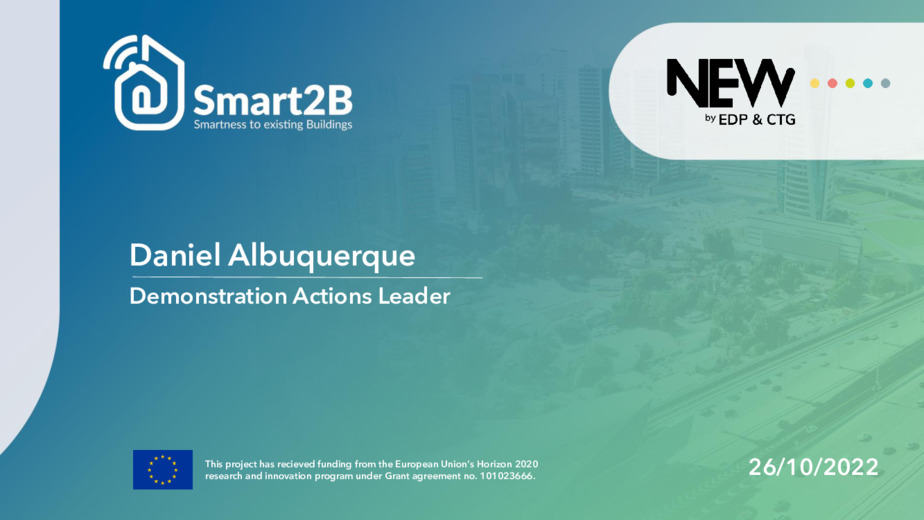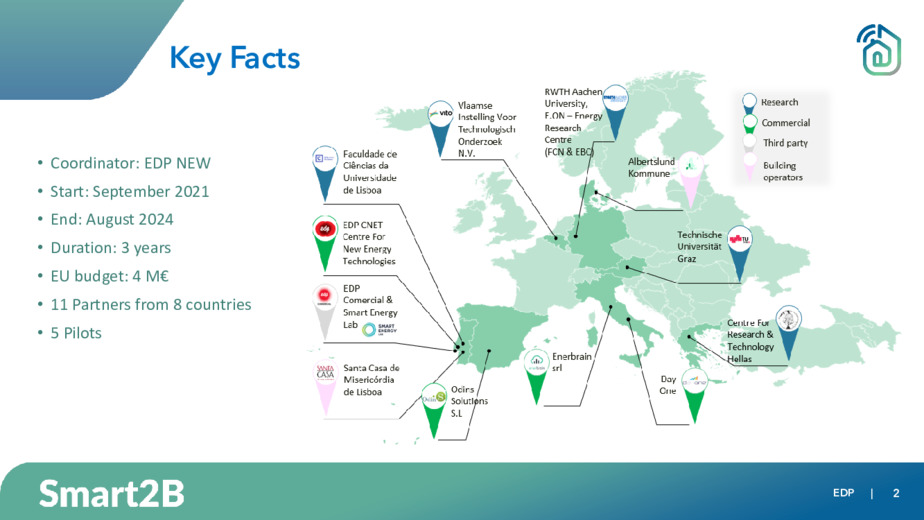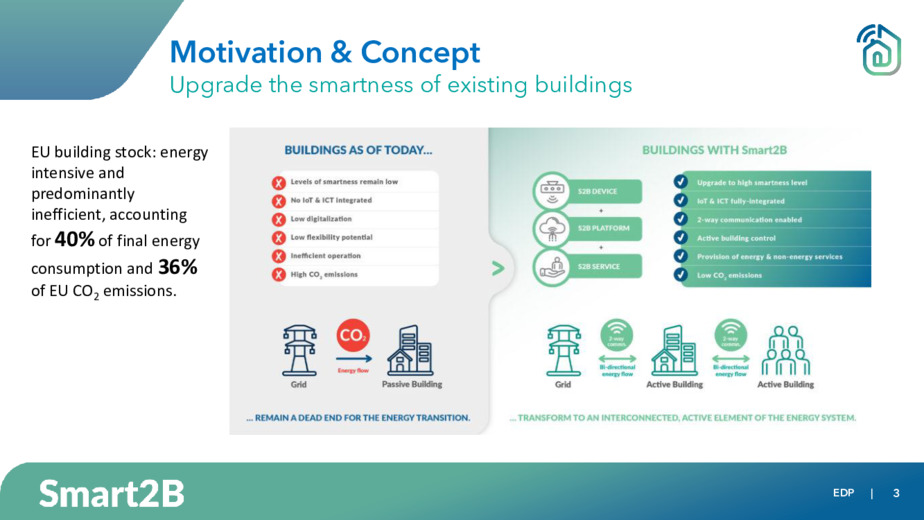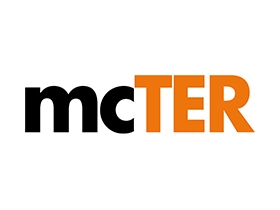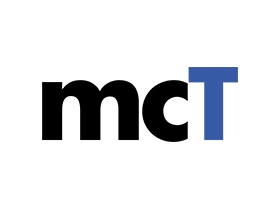Smart2B
A platform to improve the building smartness speaker to be defined
Daniel Albuquerque - EDP
Sommario
(PDF in lingua inglese)
- Upgrade the smartness of existing buildings
- Impacts
- Technology Pillars
EU building stock: energy intensive and predominantly inefficient, accounting for 40% of final energy consumption and 36% of EU CO2 emissions.
Impacts
1. Emerging information communication technologies and internet of things technologies provide new opportunities for smart building upgrades by digitalizing the existing building stock:
- Energy efficiency increase up to 40%;
- Flexibility potential up to 50%;
- Smartness upgrades up to 93%
2. Demand response can untap local flexibility potentials and thus help the EU to achieve around 40% of its energy savings and GHG emission targets for 2020
3. Creation & promotion of Citizen Energy Communities (CECs): Empowerment of consumers to play a more active role in the energy transition
Technology Pillars
- Devices and building interfaces. Allow for seamless connection of complex and heterogeneous building energy systems comprising not-yet-connected devices, smart appliances and upgraded legacy appliances as well as IoT interfaces and gateways.
- Platform & APIs. A community-enabled smart readiness platform that serves as the middle layer of the Smart2B system that enables seamless integration, knowledge extraction and control.
- Management & transversal services. AI and machine learning algorithms are used to analyze and prepare the building and user data collected from the Smart2B devices, consolidating and optimizing the various Smart2B objectives through newly developed, modular APIs.
-User interaction, client engagement & social innovation. Involves and engages the multiple stakeholders (occupants, building managers, communities, system operators) through mobile apps and web-based applications as well as gamification.
Impacts
1. Emerging information communication technologies and internet of things technologies provide new opportunities for smart building upgrades by digitalizing the existing building stock:
- Energy efficiency increase up to 40%;
- Flexibility potential up to 50%;
- Smartness upgrades up to 93%
2. Demand response can untap local flexibility potentials and thus help the EU to achieve around 40% of its energy savings and GHG emission targets for 2020
3. Creation & promotion of Citizen Energy Communities (CECs): Empowerment of consumers to play a more active role in the energy transition
Technology Pillars
- Devices and building interfaces. Allow for seamless connection of complex and heterogeneous building energy systems comprising not-yet-connected devices, smart appliances and upgraded legacy appliances as well as IoT interfaces and gateways.
- Platform & APIs. A community-enabled smart readiness platform that serves as the middle layer of the Smart2B system that enables seamless integration, knowledge extraction and control.
- Management & transversal services. AI and machine learning algorithms are used to analyze and prepare the building and user data collected from the Smart2B devices, consolidating and optimizing the various Smart2B objectives through newly developed, modular APIs.
-User interaction, client engagement & social innovation. Involves and engages the multiple stakeholders (occupants, building managers, communities, system operators) through mobile apps and web-based applications as well as gamification.
Video
Fonte: SAVE BUILDING ottobre 2022 Smart Building: un paradigma in continua evoluzione
Settori: Smart City
Parole chiave: Smart building
- Giulia Tomaselli
- Francesco Causone
- Alberto Servida
 English
English


